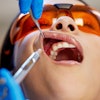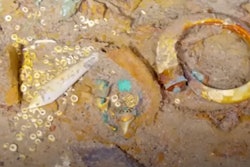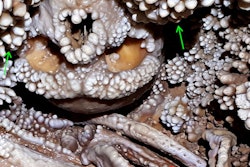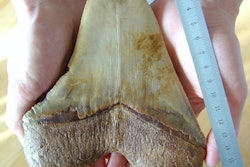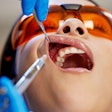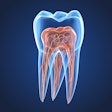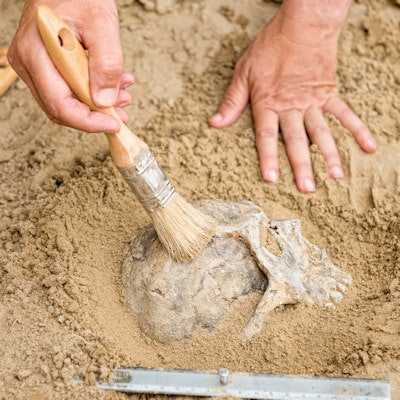
Human teeth that were worn as pendants were unearthed from the ruins of the 9,000-year-old Turkish city Çatalhöyük. This is the first documented case of human teeth being made into jewelry in the Near East, according to a new study published in the Journal of Archaeological Science.
Archeologists discovered three teeth dating back between 6,700 B.C. and 6,300 B.C. in Central Anatolia region of Turkey. Two of the teeth were modified intentionally for use as pendants, likely for symbolic or decorative purposes, the authors confirmed.
"The rarity of such artifacts in the prehistoric Near East suggests a profound symbolic meaning for this practice and these objects and provides new insights into the funerary customs and symbolic importance of the use of human body parts during the Neolithic of the Near East," wrote the authors, led by Scott Haddow, PhD, of the cross-cultural and regional studies department at the University of Copenhagen in Denmark (J Archaeol Sci, December 2019, Vol. 28).
Using human teeth for ornamental purposes has been well documented during the Upper Paleolithic period in Europe and, sporadically, during the later Mesolithic, Neolithic, and Chalcolithic periods in that continent. Until this discovery, archaeologists had found no evidence of this practice in the Near East during these times. The practice of using human teeth for jewelry may have a unique cultural significance to the people of this city.
Researchers conducted macroscopic, microscopic, and radiographic analyses of the teeth, two of which were permanent molars and the other was a permanent premolar, to determine how the holes were created. They also examined microwear by taking silicone casts of the teeth.
The two confirmed pendant teeth likely were removed from middle-aged adults after death, and then they were carefully drilled and worn for extended periods of time. A microdrill was used to grind the teeth into a conical shape, then the teeth were drilled so they could be hung on strings and worn as jewelry, according to the study authors.
Furthermore, the "postmortem smoothing, rounding, and greasy appearance" of the teeth was consistent with them being suspended from a string and having contact with soft material, such as skin or clothes, they added.
Though inhabitants from this ancient city had a strong fondness for using animal bones to decorate their homes, jewelry made from animal teeth are discovered very rarely there. This also makes researchers believe that the people of Çatalhöyük modified human teeth for purposes other than aesthetic uses.
Though there were no limitations to their study, the authors noted that they were unable to prove that age may have governed the selection and production of the jewelry based on the age of the two individuals whose teeth were modified. Due to the small sample size, they could not substantiate that interpretation.
"While the ultimate meaning of the use of human teeth as pendants at çatalhöyük remains elusive, an exclusively aesthetic purpose for this practice is unlikely given the rarity of such findings," the authors wrote.




